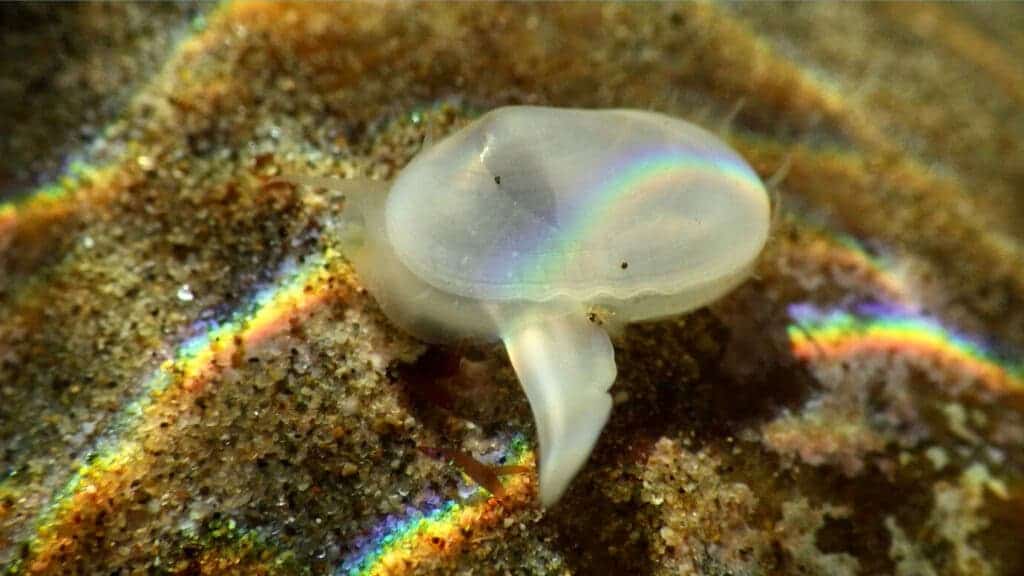Cyamatioa cooki, a species that was believed to have gone extinct over 40 millennia ago, has been rediscovered alive and well off the coast of California.

In today’s world of ecological uncertainty, it’s not often we get to hear of species going un-extinct — the norm is hearing about species disappearing, instead. But a new paper is now reporting on what may be the longest-yet period after which a species has been found alive after being presumed extinct. The species in question is Cymatioa cooki, a clam that has previously only been seen as a fossil and presumed extinct over the last 40,000 years.
The white, translucent clam was rediscovered in 2018 by a team looking for sea slugs in tide pools off the coast of California, where individuals were growing up to 11 millimeters in length.
Longest interlude
The clam was first spotted by marine ecologist Jeff Goddard while doing fieldwork. Unsure of what he was seeing but not willing to disturb the creature, Goddard took a few pictures of the unusual bivalve and carried on with his duties. When he got back home, Goddard shared the pictures with a colleague, Paul Valentich-Scott, the curator of malacology at the Santa Barbara Museum of Natural History. Valentich-Scott was, too, unsure of what species he was looking at — and this actually made him happy.
“New discoveries are part of why we’re in science,” Valentich-Scott says.
So they set to work on finding out. The pair captured a live specimen in 2019 and brought it back to the museum for comparison with other known species and the fossil record. This step allowed them to see a striking resemblance between the tiny bivalve and a fossil clam first described by paleontologist George Willett in the 1930s. At the time, Willet named the species after the amateur shell collector who first recognized the fossil as being unique among a collection of 30,000 shells, Edna Cook.
The team immediately recognized their clam after seeing the original specimen of Cyamatioa cooki that Willett used to describe the species. This would mark the species out with the very rare distinction of being known first as a fossil, and only after that as a living organism. Such a feat places C. cooki firmly in the exclusive club of Lazarus taxons.
For now, we’re still left scratching our heads as to how this species eluded us for so long a time. One hypothesis that the team is investigating is that the clam’s preferred habitat actually lies in the more remote regions of Baja, California, which have received comparatively little attention up to now. It is possible, however, that warming climates are allowing C. cooki larvae to move closer to Santa Barbara, where they were discovered by chance.
Valentich-Scott and Goddard have found at least two confirmed, and up to four potentially-living clams in the tide pools of the area.
The paper “A fossil species found living off southern California, with notes on the genus Cymatioa (Mollusca, Bivalvia, Galeommatoidea)” has been published in the journal ZooKeys.






